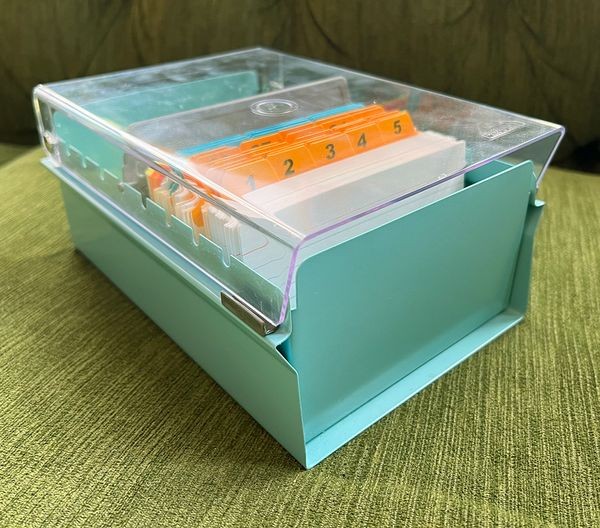In our journey to enhance learning and knowledge retention, we often search for tools that are both effective and engaging. While modern educational technology offers a plethora of options, sometimes the most impactful solutions are surprisingly simple. Last week, we explored the importance of retaining learned information and how crucial it is for building a solid educational foundation. We touched upon curriculum support, but what about those areas where structured curricula fall short?
Recall is a cornerstone of learning retention. Spaced repetition, prompting ourselves to remember and apply information at increasing intervals, is a scientifically proven method to solidify knowledge. Previously, writing activities, inspired by methods like The Writing Revolution, have been our go-to strategy. These are incredibly valuable, but creating writing prompts for every subject and topic can become overwhelming, both for the learner and the educator.
Enter a seemingly old-fashioned yet remarkably effective tool: flash cards. Many, like myself, may have initially dismissed flash cards as simplistic or ineffective, perhaps based on personal experiences or preconceived notions. However, it’s crucial to remain open-minded and consider the wealth of cognitive science research that highlights their benefits. Embracing flash cards has been a game-changer in our learning approach, and we’re excited to share why.
Flash cards are proving to be incredibly straightforward, quick to use, and, most importantly, highly effective. They’ve noticeably boosted Wanda’s confidence as she witnesses her growing ability to recall information with minimal extra effort.
 An index card organizing box, with a metal base and a clear plastic lid. Inside are tabbed dividers.
An index card organizing box, with a metal base and a clear plastic lid. Inside are tabbed dividers.
Our flash card journey is guided by the techniques outlined in Andrew Campbell’s Exploring the World through Story curriculum. To implement this effectively, we’ve gathered a few key materials:
- Index Cards: We opted for 3×5″ heavyweight index cards from Oxford. Standard index cards can be quite flimsy, and the sturdier option provides a better writing and handling experience.
- Index Card Dividers: Organization is key to effective spaced repetition. We utilize two sets of Oxford dividers: one with tabs for days 1-31 of the month and another set for the months of the year. These dividers are crucial for implementing the spaced repetition system.
- Index Card Box: Finding the right storage solution was surprisingly challenging. Many boxes lacked the height needed for tabbed dividers or were made of flimsy plastic. We discovered a fantastic option from Acrimet, a Brazilian company. This metal index card organizer is robust, offering ample space for growth and, importantly, enough height to comfortably accommodate the dividers. While ours isn’t green, the durability and functionality of a green metal box or any sturdy metal box are ideal for long-term flash card organization. Investing in a quality Learning Flash Cards Green Metal Box or similar durable container is a worthwhile investment for any serious learner.
Creating the flash cards is a simple process. We write a question on one side and the corresponding answer on the reverse. To maximize versatility, we design the cards to be used in both directions, mimicking a Jeopardy! style format. For instance, for a card about Vishnu, one side asks, “Who is Vishnu?” while the answer side states, “The Hindu god of preservation.” This phrasing allows the card to be used in either direction, enhancing its utility. Avoid phrasing answers like “Vishnu is the Hindu god of preservation” as this limits the card to question-to-answer use only.
(Need ideas for flash card content? Quidnam Press offers Living Memory, a resource compiling essential information worth memorizing. A free sample is available on their website.)
When introducing a new card, it enters our daily memory work rotation. It remains in daily review until understanding is solid and recall is effortless, typically within a few days. Subsequently, the card is moved to a date further in the future – perhaps a few days or a week out. As the card resurfaces in the rotation, the intervals are progressively spaced further apart, and we often incorporate reverse-direction questioning to challenge recall from different angles.
Our daily flash card sessions are brief, usually encompassing just a handful of cards and taking only 5 to 10 minutes. This ease of integration into our daily routine is a significant advantage. Flash cards have proven invaluable in pinpointing knowledge gaps, providing opportunities to refine explanations, address misunderstandings, and deepen comprehension.
Witnessing Wanda’s growing confidence alongside her improved recall speed has been incredibly rewarding. She genuinely enjoys the sense of accomplishment that comes with mastering information. She was so enthusiastic about the process that she even requested her own set of index cards and a card box – hers is purple, adding a personal touch to her learning journey!
Flash cards, while simple, are undeniably effective. However, let’s acknowledge that they can be somewhat dry. In an upcoming post, we’ll explore another, more engaging method we’re incorporating to inject fun into memory work.
To delve deeper into the science behind effective memorization, consider exploring books like Why Don’t Students Like School?, Make It Stick, or The Knowledge Gap. For a quicker introduction, you can read our previous blog post on the science of learning or another post featuring links to insightful articles on designing lessons for optimal retention.
💬
Join the discussion about this post on Facebook.